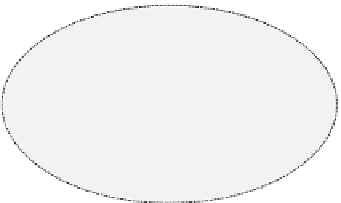Information Technology Reference
In-Depth Information
3.2 Social Position's Influence over Service Selection
In this scenario, we will explore how the service user's social position can decide the
user's needs and eventually influence over service selection. To make the relationship
between social position and services-selections clearer, we choose the same individual
agent occupying different positions in the same physical context.
Fig. 4.
Social Position's Influence over Service Selection
As depicted in the Fig. 4, during London Olympics, John is aspectator as well as
anathlete.Service discovery follows a similar process as the
i*
goal-task iterative
refinementprocess. The top goals in the goal decomposition structure stands for the
high level abstract user needs. As these goals are refined into more detailed levels,
they will finally reach a level of abstraction that refers to concrete tasks which could
matchgiven web services.As shown in Fig. 4, even if the social position spectator and
athleteshare the same top goal “Transport to Venue”, they could also lead to different
service selections. This scenario shows, there are basically three possible results for
the same user to pursue the same top -level goal using different positions:
1.
The derived services are exactly the same, such as the “weather service”, where
social positions make no difference.
2.
The selected services are completely different, such as the “register service” and
“ticket service”, which implicates social position leads to completely different
procedures for achieving the same goal.
3.
The selected services are basically the same type, but have different variations,
such as the “transportation planning service” has different entries for athletes or
spectators.





















































